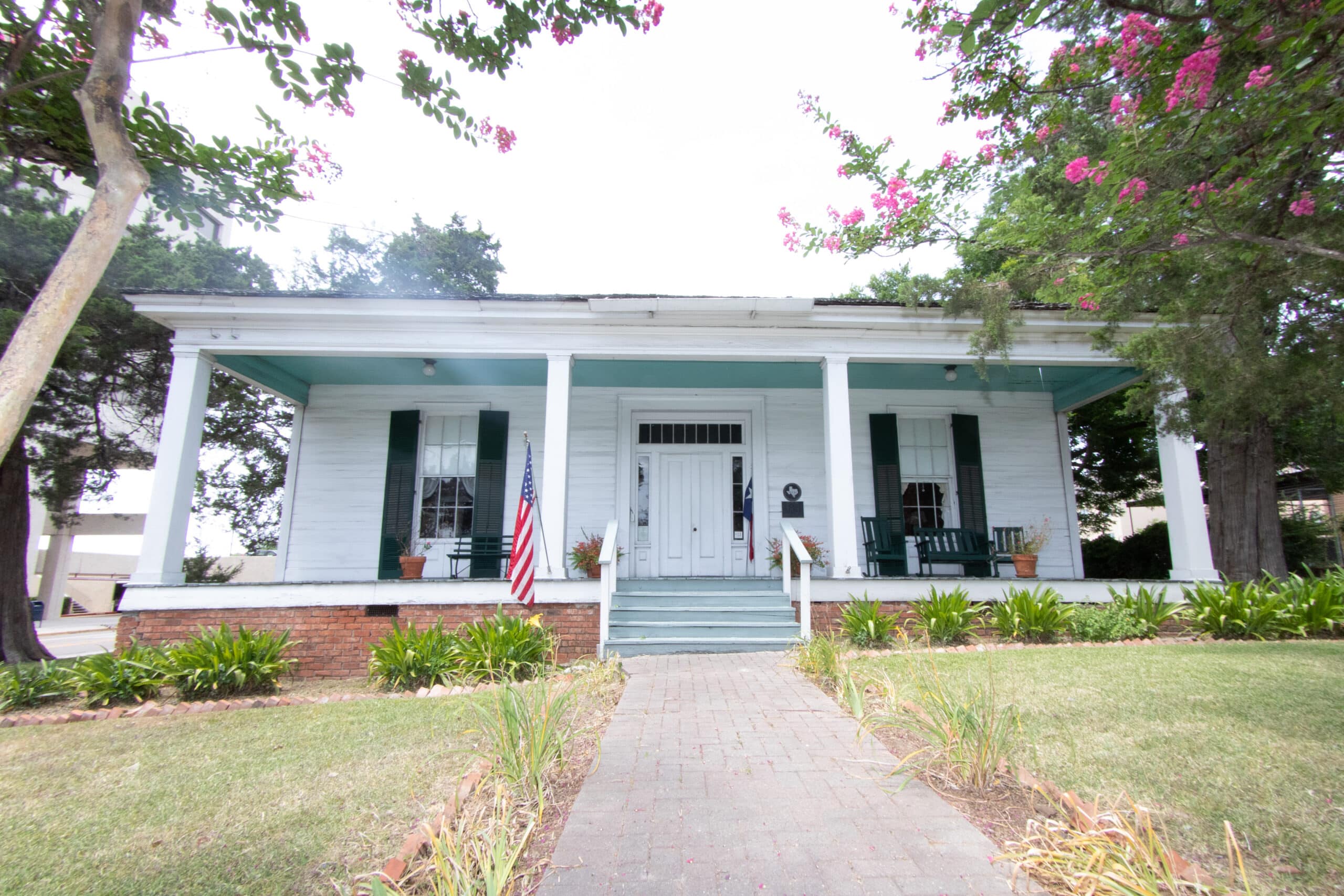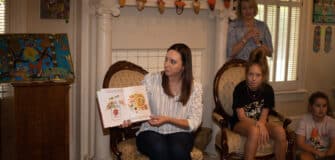
Located on the corner of 11 th Street and Avenue M in Huntsville is the historic Gibbs-Powell
Museum. This house was commissioned by Thomas Gibbs, the original owner of the house, and
constructed in 1862. The house was constructed by W.M. Barrett, who also built the Austin
College building located on what is now the Sam Houston State University campus. After the
Gibbs family lived in the house, female students who attended the Sam Houston Normal
Institute along with the Mott and Jarrard families rented the house between the 1880s and
1890s. Judge Ben Powell II and his wife Eleanor bought it in 1897 because she had relations to
the Gibbs family; Anna Powell was the last to live in the house in 1983. Now, the building is
managed by the Walker County Historical Commission, which leases it from the Powell family,
who helped restore the house to its current model.
The Gibbs-Powell Museum is open Tuesdays-Fridays from Noon to 5:00 PM and Noon to
4:00PM on Saturdays. Guests can walk-in or reserve tours for schools or groups. Lee Anne
Wiseman, a docent for the museum, offers a delightful tour of the many rooms upstairs and
downstairs. These rooms are filled with furniture and mementos from the Gibbs and Powell
families, along with other families from the Walker country area, to encapsulate life for the
many people who lived within the walls.
During the late-1860s/early-1870s, the Gibbs family extended the first floor due to their
growing family; Thomas Gibbs had a total of eight children, two with his first wife and six with
his second wife Mary. The house originally had two downstairs bedrooms, one in the back, and
an exceptionally large upstairs bedroom for the kids. When female students later rented, they
lived upstairs and split the room into two bedrooms; the Mott and Jarrard families had the
downstairs. This extension was not attached to the house until 1913 when the Powell family
owned it.
Photographs of the families can be found in the front section hallway and front bedroom.
Sisters Louise and Inez Powell taught piano and voice at Sam Houston Normal Institute and
other Huntsville schools. In the parlor room, there is a square piano from 1875, a Victorian 1885
pump board, and Regina music box that were made between 1892-1921. All still work, but
were not owned by the sisters. Items from Louise and Inez’s teachings remain in the parlor
room–busts of composers like Franz Joseph that were gifted to commemorate their students’
year of study. Additionally, people claim to hear the sound of piano playing in the house as
though Louise and Inez are still giving lessons.
When looking at the bottom of the window in the parlor room, there is an opening portion
called a jib door that helped air circulate throughout the house. This was also done with the
placement of the front and back door being a straight walkway for air flow. When it was too
cold to open the jib door, the fireplaces–which extended to the second floor–were combined
for heating.
There are two dining room set-ups, one with a table made for two people, and the other with a
table for six. The smaller one is the original dining room that was converted into a bedroom
before the 1860/70 extension gave the Gibbs family more room. In the original room, there is a
small pantry with a lock; it would be locked due to the Gibbs children’s sweet tooth! It also had
another door that led out to the 15’x34’ brick kitchen, which was not attached to the house,
but is currently a bathroom, added in 1917.
The front bedroom, considered the master bedroom, accommodated Thomas and Mary Gibbs,
Benjamin II and Eleanor Powell, and Inez Powell. Inez’s hope chest, which was made by inmates
at the Walls Unit and was designed for a bride as a gift from her groom, is one of the biggest
items in the room. Even though Inez was never married, she moved into the room to take care
of other children with the help of Louise Powell and their brother Benjamin III. A dress can be
seen hanging from the wardrobe. This changes seasonally between a lace dress, a donated
pioneer casual dress, and the Powell sisters’ party dress.
The second bedroom has a large bathroom that was a storage area during the 1860/’70
extension, until indoor plumbing converted it into a bathroom in 1917. There are empty vintage
medicine boxes that show how far medicine has come. But there is also a medicine cabinet that
is said to open by itself, even though it has a latch; however, as a calming explanation, this
could be explained by the house shifting.
When people venture upstairs, they might notice a few things–the first being a lack of air-
conditioning. Then there are also penciled names visible on the walls of the bigger room. The
lack of air-conditioning makes people who visit understand what it could have been like for the
children and women who slept upstairs; it also gives appreciation for the beauty of air-
conditioning! When coming to terms with the absence of air-conditioning, people then read the
thirty or so names of the female student tenants from 1890-1897 in beautiful cursive. The low
ceilings, compared to the high ceiling on the first floor, are another reason for the heat upstairs
due to heat rising.
Outside the house is a horse-drawn wagon from 1910-11 that belonged to Wilbourn Sandford
Gibbs, the brother of Thomas Gibbs, who helped run a local mercantile store called Gibbs Bros.
& Co. This wagon was used for the business when they needed supplies from places like
Galveston.
While the Gibbs-Powell house is the only thing that remains, there was a bathhouse with a
water system in the west side, a well house on the east side, and an outhouse on the north
side. There was a stable on the land for the horses that possibly was located where the First
United Methodist Church now stands.
The back of the house has the gift shop and is a Walker County historic area. Here George
Weedon’s original tombstone remains. Weedon, who fought in the battle of San Jacinto, had
his tombstone found in the battlefield; his body was relocated to Austin Cemetery with a new
tombstone. Another figure is Minnie Fisher Cunningham, who help found Texas Women’s
Suffers Institution and the League of Women’s Voters, and her green basket that she used
during her fight for getting women to vote. Samuel Walker, the real Walker Texas Ranger, has a
display for his times as a unionist and the development of the Samuel Colt Revolver. There is a
changing display, so people can expect to learn something new each time.
The Gibbs-Powell Museum is an amazing opportunity for Huntsville to learn about its
community before air-conditioning, plumbing, and motorized vehicles. The museum partners
with Historic Tours of Texas, where people can come for events, like high tea. Even though
COVID-19 cut into events, there is an annual reception in February at the museum during the
town’s celebration of Sam Houston’s birthday—about a hundred people visit during this time.
There is something to interest everyone at the Gibbs-Powell Museum.
1228 11th Street
Huntsville, TX 77340
(936) 295-2914
walkercountyhistory.org/museum

Postcards Magazine
936-293-1188
PO Box 690
Huntsville, TX 77342
